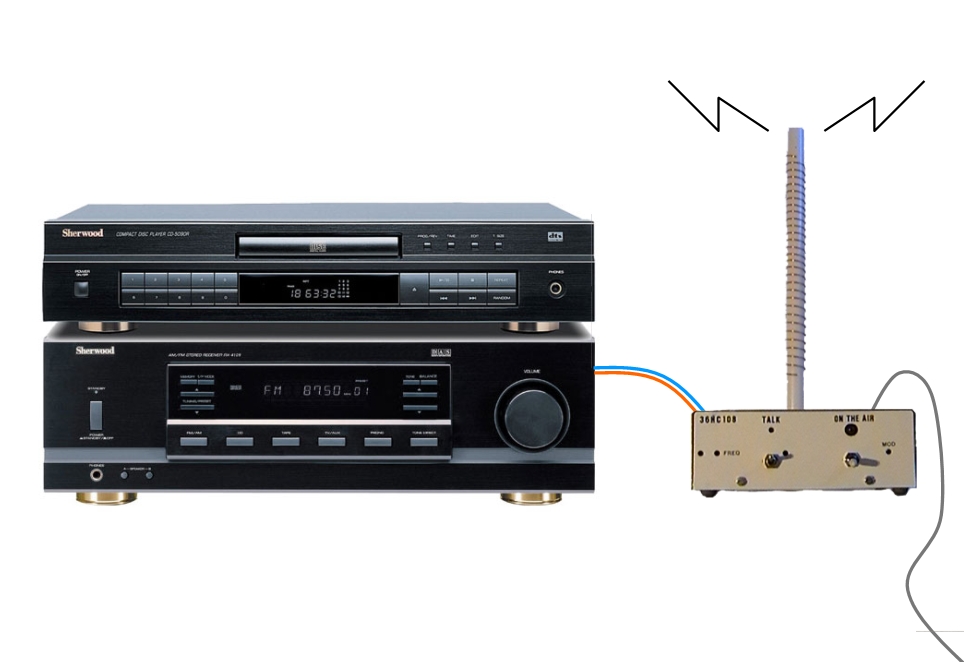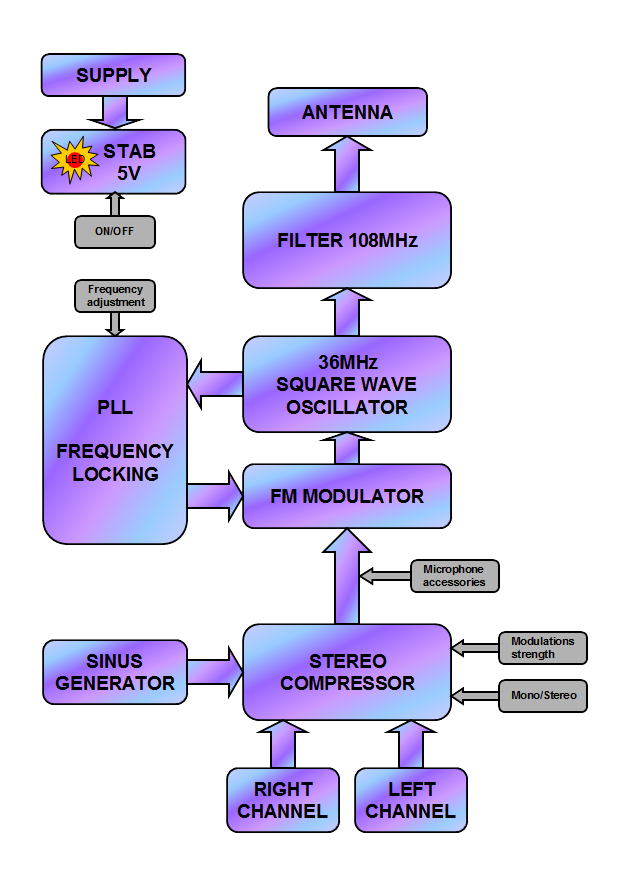This project is fully applicable as long the analog broadcast system not is replaced with a digital system (such as DAB radio), but the design may be interesting for purposes of study, then the method for delivering a radio signal is a bit special.
This radio transmitter do not consist of operational amplifiers or transistors, since you can use HC logic for the same purpose. The project would be difficult to design if I did not have access to my custom built filter simulator (DOS program), which make it possible to produce passive filters for different purposes.

36HC108 includes a stereo generator and the construction is structured to function for the system we use when we listen on radio (with stereo support).
The block diagram:

If you want to look closer on this thing you can download it here:
In the zip-file can you find everything required to implement it (manuals, diagrams and PCB-files)
- except to realizing it.
| 36HC108#A-4 |
# A-2
Since it's now easy to order a processor crystal with the value 4864 kHz (that was not the case before where I live) so awakened the interest in to spice up
this construction. I noticed a significant improvement in stereo separation with the help of the new quartz crystal. Beyond this exists a reason to improve the
hi-fi properties as best as possible. This project contains therefore a new module named ST-AAC, which regulates the signal level and keeps it constant. The
improvements also include some fine-tuning of the old audio filter circuit on ST-AUDIO.
To begin with: change the capacitor C3 on ST-AUDIO to 27nF. This provides a near optimal stereo separation. Then it's time to brush up the sound. If we reducing
C5 and C6 to 100 nF instead of 2.2 uF so will incoming low frequency interference be blocked with sufficient effectively. R13 is changed to 22k (previously 47k)
which means that the base is lifted even more. C12 is changed to 10n (previously 22n) which highlights the lower midrange. Finally shall the treble be lifted
slightly by changing C8 to 3.9 nF, instead of 3.3 nF. R16 can remain unchanged, but R15 should be raised to 220k (previous 100k) so that the pilot tone not
begins to dominate. Implements these changes will we get a richer and more vivid stereo sound (in concerned radio receivers) and in addition reduces the
background noise to a minimum. 2016-02.
2016-08: Further adjustments have now been made with two components. The midrange and treble was apparently suppressed but has now been raised. Change R13 to
100k (previously 22k) and C8 to 3n3 (previously 3n9).
# A-3
2021-04: Unfortunately, it has been discovered that the PLL unit counteracts weak audio signals so that ST-PLL tries to compensate away the sound. This was
because the ratio between R3 and R4 on ST-HFOSC was too small. If one changes R4 to a smaller and R3 to a higher value, the ratio becomes larger and ST-PLL
cannot compensate for weak incoming audio signals. R4 has thus been changed to 1k (previously 10k) and R3 to 47k (previously 22k).
In addition to these changes, it has emerged that the audio filter on ST-AUDIO has a generous bass register. With C5 and C6 set to 100nF, the base reproduction
is very good - hifi class. However, to avoid distortion in the transmission, the baseband must be cut. The deep bass can instead be obtained with some form of
bass amplification on the radio receiver. C5 and C6 on ST-AUDIO have thus been changed to 22n.
# A-4 2024-12: I recently discovered that the problem described in A-3 is not fixed at all, in addition the treble is muted! R4 on ST-HFOSC is now set to 47 ohms and C11 on ST-AUDIO is set to 470pF.

